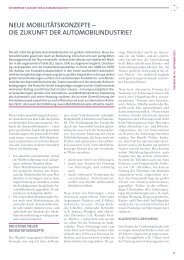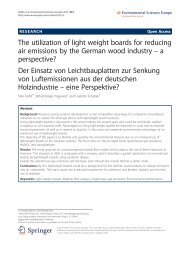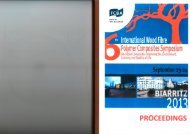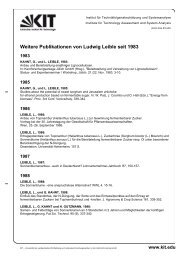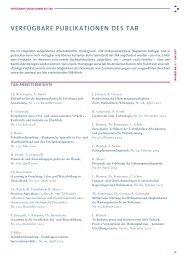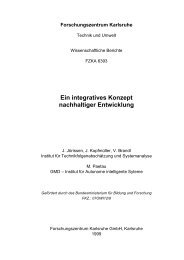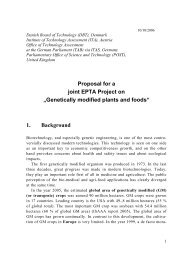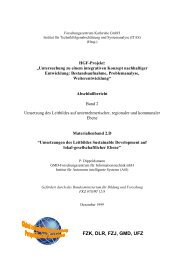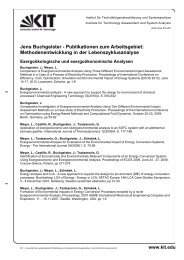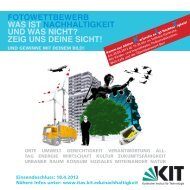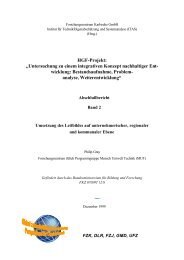Results: RFID and Identity Management in everyday life - ITAS
Results: RFID and Identity Management in everyday life - ITAS
Results: RFID and Identity Management in everyday life - ITAS
Create successful ePaper yourself
Turn your PDF publications into a flip-book with our unique Google optimized e-Paper software.
Case ID 56, level 3<br />
Title OV-chip Kaart<br />
Researcher Christian van ‘t Hof/ Sil Wijma<br />
Tim<strong>in</strong>g 2005-2007<br />
Geography The Netherl<strong>and</strong>s<br />
Environment Public Transport<br />
Case #56: OV-chip Kaart<br />
Technology ID card with passive tag, rewriteable<br />
Readers <strong>in</strong>stalled at the entrance <strong>and</strong> exit of the different means of public transport. Central database<br />
controls payments <strong>and</strong> profiles travellers.<br />
East West builds <strong>and</strong> ma<strong>in</strong>ta<strong>in</strong>s the system [22, 34].<br />
Costs Start<strong>in</strong>g costs: accord<strong>in</strong>g to one source more than one billion euro [8]. The total costs are probably around<br />
1,5 billion euro [33]. The government only pays a small part of this: the pilots were supposed to cost €7,8<br />
<strong>and</strong> the total implementation €90 million [23]. Later more money was needed up to a total of €129 million<br />
[38].<br />
Maturity Different pilots. A pilot runs <strong>in</strong> the city of Rotterdam, while the card will be implemented <strong>in</strong> the whole Dutch<br />
public transport system <strong>in</strong> 2007.<br />
Function Payments<br />
Owner Trans L<strong>in</strong>k Systems (TLS), a consortium of the five larges public transport companies <strong>in</strong> the Netherl<strong>and</strong>s,<br />
represent<strong>in</strong>g 80% of the Dutch market.<br />
Ma<strong>in</strong>ta<strong>in</strong>er East West<br />
Users Dutch users of the public transport, tra<strong>in</strong>s, busses, subway, etc.<br />
Other actors - Different organisations: CBP (College Bescherm<strong>in</strong>g Persoonsgegevens), L<strong>and</strong>elijk Overleg<br />
Consumentenbelangen Openbaar Vervoer (Locov), L<strong>and</strong>elijke Campagneteam <strong>in</strong>voer<strong>in</strong>g OVchipkaart<br />
(Lcov), EastWest<br />
- Different consumer organisations: Consumentenbond, Rover, Bits of Freedom<br />
- Different public transport operators: NS (Dutch Railways), TLS, GVB, RET, Connexxion, HTM,<br />
Mobis<br />
Case story The OV-chip card is a <strong>RFID</strong> card system for all forms of public transportation <strong>in</strong> the Netherl<strong>and</strong>s; bus, tram,<br />
metro, tra<strong>in</strong> <strong>and</strong> ferries. The Netherl<strong>and</strong>s is the first country to <strong>in</strong>troduce such a nationwide public transport<br />
system for access <strong>and</strong> payment. The system is based on the Octopus system of the city of Hong Kong,<br />
where the system works quite well. The London Oyster card is another example that is very similar. The<br />
<strong>in</strong>troduction of the OV-chip card will be done per region because research showed that an immediate<br />
nationwide <strong>in</strong>troduction was not possible [21].<br />
Before the nationwide <strong>in</strong>troduction of the OV-chip card different pilots are held [30, 52]. The first pilot was on<br />
a ferry service <strong>and</strong> started on 13th December 2004 [21]. Another important pilot is runn<strong>in</strong>g s<strong>in</strong>ce 2005 <strong>in</strong><br />
Rotterdam with 30.000 test travellers. The pilots were meant to see if a nationwide <strong>in</strong>troduction of the OVchip<br />
card is possible [21]. The tests showed that there are different issues to be solved before a nationwide<br />
<strong>in</strong>troduction is possible. Many technical difficulties occurred, urg<strong>in</strong>g the pilot <strong>in</strong>to overruns <strong>and</strong> counter<strong>in</strong>g<br />
efficiency claims [27, 28, 29, 31].<br />
But the m<strong>in</strong>ister still decided to cont<strong>in</strong>ue the <strong>in</strong>troduction of the OV-chip card [38, 51]. Therefore a second<br />
round of pilots was started to develop more experience <strong>and</strong> simplify the nationwide <strong>in</strong>troduction [21]. In the<br />
summer of 2006 the Amsterdam metro system started a pilot by giv<strong>in</strong>g 30.000 travellers an OV-chip card.<br />
Different members of parliament emphasize the need of a good <strong>in</strong>formation campaign to <strong>in</strong>form the public<br />
about the OV-card [25]. Because of the problems encountered <strong>in</strong> the pilots the <strong>in</strong>troduction of the nationwide<br />
system is postponed with one year <strong>and</strong> should be <strong>in</strong> use before the 1st of January 2009 [38].<br />
Privacy<br />
An important issue <strong>in</strong> the <strong>in</strong>troduction of the OV-chip card is privacy. In February 2006 the CPB (the Dutch<br />
council on privacy matters) warned the NS (Dutch Railways) <strong>and</strong> other public transport corporations that the<br />
storage <strong>and</strong> use of travel <strong>in</strong>formation is not always legitimate [5]. The CBP states that the aggregation of<br />
data has to be limited to the necessary data. But public transport organizations want to collect as much data<br />
as possible for direct market<strong>in</strong>g <strong>and</strong> to get detailed <strong>in</strong>sight <strong>in</strong> the use of the public transport [4, 5]. Accord<strong>in</strong>g<br />
58



